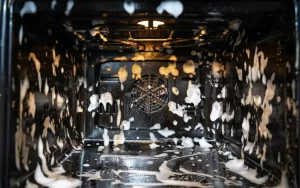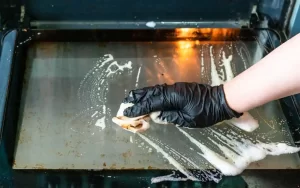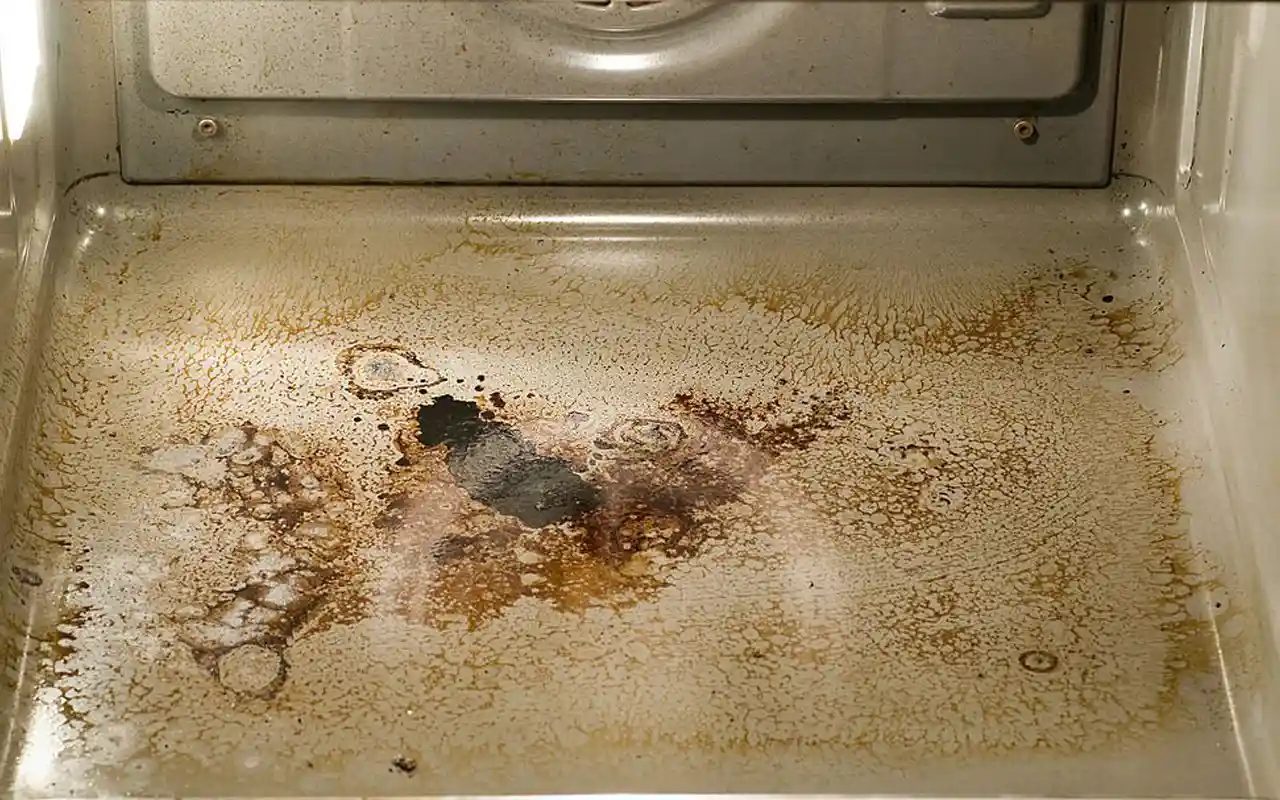When it comes to keeping our ovens spick and span, two popular methods come to mind: steam cleaning and self-cleaning. Both options aim to ease the burden of manual scrubbing, but both differ in their approach.
Steam cleaning harnesses the power of hot water vapor to loosen grime and stains, requiring a bit of elbow grease for the final touches. On the other hand, self-cleaning ovens are a modern marvel, using extreme heat to turn residue into ash, which can be wiped away effortlessly.
You might like to check our other topics
- Best Steam Cleaner for Ovens
- Best Steam Cleaner for Mattress
- How to Clean Air Ducts Yourself
- How to Clean a Microfiber Couch
Steam Clean Vs. Self-Clean Ovens
Certainly! Let’s delve into a detailed comparison of steam cleaning and self-cleaning ovens, making it easy to understand which option suits your needs best:
Cleaning Method
- Steam Cleaning: Steam cleaning uses the power of hot water vapor to soften and loosen food spills and grease inside the oven. The process is generally faster than traditional scrubbing, but it may still require some manual wiping to remove the loosened grime effectively.
- Self-Cleaning: Self-cleaning ovens have a unique feature that locks the oven door and heats the interior to very high temperatures (usually around 900°F or 482°C). This extreme heat turns food residues into ash, making it easier to wipe away once the cleaning cycle is complete.
Time Required
- Steam Cleaning: Steam cleaning is typically a quicker process compared to self-cleaning. It usually takes around 20-30 minutes to complete, depending on the level of dirtiness.
- Self-Cleaning: Self-cleaning cycles take longer to complete, typically lasting 2 to 4 hours. The oven needs additional time to heat up, complete the cleaning process, and then cool down before it can be used again.
Environmental Impact
- Steam Cleaning: Steam cleaning is considered more eco-friendly as it uses only water and heat, avoiding the need for harsh chemicals.
- Self-Cleaning: Self-cleaning cycles use very high temperatures and may emit some smoke and odors during the process. Additionally, the extreme heat consumes a substantial amount of energy.
Cleaning Effectiveness
- Steam Cleaning: Steam cleaning is effective for light to moderate oven messes. It can handle spills and stains but may not be as effective for heavily baked-on or stubborn residues.
- Self-Cleaning: Self-cleaning ovens are highly effective for tackling tough, baked-on grime. The extreme heat breaks down the residues, leaving behind only a small amount of ash that can be easily wiped away.
Safety Considerations
- Steam Cleaning: Steam cleaning is generally safe, but it does involve using hot water vapor. Care should be taken when handling hot surfaces, and it’s essential to follow the manufacturer’s instructions.
- Self-Cleaning: Self-cleaning cycles involve extreme temperatures, and it’s important to be cautious during the process. The oven door will be locked for safety, so it’s crucial to keep children and pets away from the oven during self-cleaning.
Oven Condition
- Steam Cleaning: Steam cleaning is suitable for regular maintenance and light cleaning. It helps keep the oven in good condition when used regularly.
- Self-Cleaning: Self-cleaning cycles are ideal for deep cleaning and removing stubborn residues. However, frequent self-cleaning cycles might lead to wear and tear on oven components over time.
Tips to Use Self-Cleaning Oven
- Check your manufacturer’s instructions before starting the self-cleaning cycle.
- Before starting the self-cleaning cycle, wipe out your oven to clear large bits of food spills. It will reduce the burning odor during the process.
- Ventilate the area properly by opening windows and turning on your ventilation fan, so the fumes and odor can disperse.
- Do not use any oven cleaners; if the interior gets damaged by using them. It won’t be covered by the warranty.
- Take out all the trays and stainless steel racks from the oven as the high heat can damage them.
- It’s always better to be on the safe side and use the self-clean option when kids or pets are not around.
- Some self-cleaning ovens have an auto-lock mechanism that seals the oven when you start the process. If the self-lock mechanism isn’t available, then you should lock the oven manually.
- The most important thing is to allow it to cool down once the auto-cleaning cycle is complete before removing ashes from the oven.
- You can use any cleaning solution to wipe out the ashes.


Tips to Use Steam Cleaning Ovens
Steam cleaning an oven is a relatively straightforward process that involves using steam and heat to help loosen and remove baked-on food residues and grease.
- Steam cleaning the stove or oven should be done frequently without waiting for the food spills to harden, which will be difficult to remove.
- Do not use any cleaning agent with water during the process as the steam will react with the cleaning agent, and the residue of the cleaning agent may later react with the food and can cause food poisoning.
- Do not start the steam cleaning when the oven is hot.
- Always wipe clean the oven first to remove grease from the oven. But never use any hard scraper to clean stuck-on spills as it can damage the interior enamel coating.
- After the steam cleaning cycle is complete. Let it cool down before wiping the moisture from the interior cavity of the oven.
- Steam cleaning might require additional cleaning of any remaining spots and spills if they weren’t cleaned during the process.
Advantages of Using Steam Cleaners to Clean Ovens
- No toxic fumes or odors are emitted during the process, so it’s completely safe to use it around kids.
- It doesn’t use as much heat or energy as self-cleaning ovens.
- It eliminates the dangers that are associated with self-cleaning ovens.
- There is no need to use harsh chemicals. Steam itself is enough to clean the grease and melt the build-on dirt.
- Steam cleaning oven grills are also safe and can be easily done with steam cleaners.
- It reduces the cost of cleaning as steam cleaners can be used for steam cleaning kitchen appliances too. Not just this, you can use steam cleaners to clean tile grout lines and grease on kitchen floors.
We recommend our top pick machines that are best for cleaning ovens and stoves.
Bottom Line!
Ultimately, the choice between steam cleaning and self-cleaning ovens depends on your cleaning preferences, the level of dirt in your oven, and your tolerance for heat and odors. Some ovens even offer both self-cleaning and steam-cleaning options, giving you the flexibility to choose the method that suits your needs at any given time.
- Bissell Spotclean Pet Pro Review - February 21, 2024
- McCulloch MC1385 Steam Cleaner [Black Friday Deal 2023] - November 11, 2023
- Bissell Crosswave Pet Pro Review [Black Friday Deal 2023] - November 11, 2023
